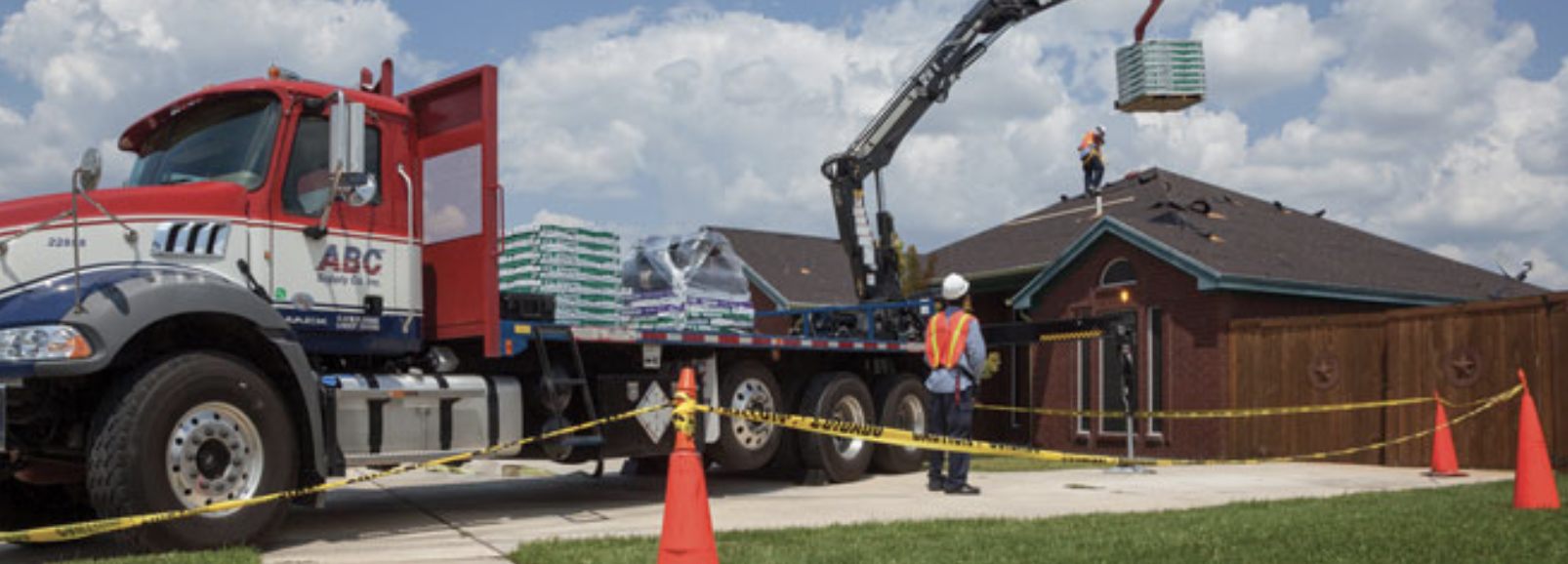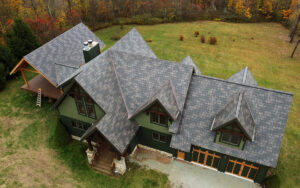Improving Gutter Efficiency To Preserve Roofs and Structures
By Anthony Brass
Many roofing package installations include new gutters. These are usually the last components added, after the metal roof. The amount of rainwater flowing into the gutters is relentless. Maximizing efficient water flow from the gutters to the bottom of the downspouts can prevent future damage. Improper flow may lead to water weakening the roof’s surface and underlining, seeping or leaking into the structure’s walls, pooling on the ground and destabilizing the foundation, or compromising landscaping with excessive amounts of water.
When the correct gutter size is installed, the force of the elements is not as much of a factor. The gutter allows the free flow of water. In addition, necessary adjustments based on roof pitch and other factors, and adding accessories, will increase efficient flow. Exhaust all opportunities to prevent problems that overshadow the results.
Water Flow on Metal Roofing
There is less surface tension on smooth metal roof panels, so water rushes down faster into the gutters, potentially shooting out far from the eaves. Some metal roofs will have an aggregate in the paint coating to give a rougher surface to reduce flow, but the rate of the water is still elevated. Gutters have to be able to accommodate the increased rate of flow.
Gutter Size Choice and Type, Downspouts, Pitch, Other Factors
Many factors dictate the size of gutters to complement a metal roof. The pitch affects how fast rainwater flows off the metal panels. The faster the water is flowing downward, the larger the gutters that are needed. Residential metal roofs have varying roof pitches, but many include a lower pitch. “Typically, you are going to be looking at a 4/12 or lower (pitch) and you can get away with a 5” gutter without any problems,” says Aaron Bukolt of Gutter Supply. “Anything over a 4/12, you’ll want to go with a 6” or possibly 7” gutter, depending on the pitch.” Bukolt adds you should measure the pitch yourself to make the determination on gutter size. He also says there’s a bit of a variable to follow in your pitch adjustment for smooth metal roofing: the 4/12 pitch is going to be the max-out for a 5”, the maximum for a 6” is 8/12, and steeper roofs require a 7” or 8” gutter, depending on the application.
Number of Downspouts and Size
The number of downspouts and their dimensions affect gutter size choice. “The volume of water that any size gutter can effectively drain is dictated by the size of the outlet and downspout that you put on that gutter,” Bukolt says. He adds, “As you increase the downspout size, you increase the overall water-flow capacity of the gutter system.”
The addition of outlets and downspouts may be necessary to evacuate the water. Bukolt says every 40-foot stretch or more of gutter will require at least a second outlet.
Choice of Shape
You present different types of gutters and downspouts to customers; they expect to hear the benefits and drawbacks for each. Whether they opt to only have new gutters installed or as a roofing package, they want flawless results with the components working together to protect their roof and house.
Many request the classic K-style shape for strength and proper channeling of rainfall, but again, size is determined by the generated speed of water. Even with the most efficient gutter shape, increased rates of water down the panels means a 6” or even 7” gutter will be required to ensure proper channeling from the roof to the ground. The 5” gutter is common, but once again, the size and pitch of the roof influence the size of the gutter system.
You pay attention to all areas during a metal roof build, and how these will affect flow and distribution of water. Bukolt says to primarily look for the overall span of your rafters, pay attention to hips and valleys, and what is on the grade, i.e., if you’re working on a structure that’s on a parking lot or turf. “That will ultimately affect where the water is going to be dispersed once it gets off the roof,” cautions Bukolt.
Gutter Positioning and Effective Flow
Studies and analyses of gutters and water flow go back to the ’30s, and before. Research papers from the Bureau of Standards Journal break down the technical numbers behind effective and ineffective gutter size and positioning based on different measurements of flow. These principals are still applied today. When installing a metal roof over an existing one – shingles or metal – the gutters may need to be repositioned to ensure proper water flow.
“If you install a metal roof over another roof, the gutters aren’t always changed,” says Alex O’Hanley, business development manager, for GutterBrush. The metal roof may be in a different position when sitting over an older roof. “The water comes off faster and at a higher vantage point.” He adds the gutters left on may be positioned too low after panels are installed and fast water rushes down, shooting past the gutters. “If the gutter’s sloped, the low end of the gutter may be an inch lower than it should be, and water completely misses the gutter.” In these scenarios, he says you will likely have to take the gutters off and install new ones that are higher and wider. Or you’ll need the time-consuming task of completely repositioning the existing gutters to a higher level against the drip edge to ensure water flows in. There are other options to avoid replacement, which includes gutter accessories.

Brush-type gutter guard from GutterBrush.
Accessories Improving Flow
One accessory to suggest, to avoid repositioning or adding new gutters, are brush gutter guard inserts. These are long, circular-shaped black brushes that fit inside gutters. The brushes are lined up from end to end and prevent the buildup of leaves and other debris. When installed, the tops of the bristles sit above the gutters. The water comes down, hits the raised high-profile bristles, and is drawn into the gutter. This ensures proper directional flow into the gutters and not over the side. O’Hanley says these types of guards are ideal for metal roofing contractors because they emphasize the acceptance of water into the gutters.
Brush guards also keep leaves from entering the gutter, which prevents future clogging, ensuring effective flow and drainage. Leaves fall on the curved bristles and do not stay there, as they fall off or are blown down below.
Standard gutter guards and covers are designed to keep leaves and debris from collecting in gutters and elbows of downspouts. These lay on top and have holes to channel water inside. When water rushes down a metal roof at higher speeds, and the right components or accessories aren’t installed, not all liquid enters these holes and bypasses the gutters.
The aluminum K-style guards are shaped to help slow down the flow and have grooves to bring water in. These also have serrated tops to slow the water, to allow for surface adhesion, so it channels into gutters. The combination of grooved design and shape helps water enter the gutter and not bypass the guards and fall below. If guards aren’t grooved or designed to handle higher volumes of water, larger 6” or 7” gutters are needed to prevent water from flowing over the side.
There are other, smaller accessories to create proper flow and direction of rainwater and melt-off. Gutter splash guards prevent water from spilling over onto the ground. These are installed on the edges of gutters so rushing water splashes back into the gutters, not over the sides. These are ideal in corners, areas where gutters meet.
Gutter guard accessories prevent leaves and other debris from collecting and clogging the system. Leaves restrict rainfall from properly flowing through gutters and prevent proper drainage, leading to gutter, fascia or other structural damage. Gutter guards and accessories lessen or prevent clogging, which is essential for proper flow and water distribution. Maximize flow with consistent results by using the proper products for the situation.
Effective flow in gutters is important for any season. Ice can build up inside gutters in the winter, restricting flow when melting begins. To prevent ice buildup, Bukolt recommends installing heat cables in the gutters. This accessory generates heat, promotes a slow, even distribution of water from melt-off, and allows water to channel through the gutters.
Conclusion
Metal roofs are made to last. Make sure the other components, especially gutters, are working in unison with the entire roof system and are maintaining proper flow. Take the steps to promote long-term function and preservation of all parts of the roof for a successful project. MR
Thank you to the following manufacturers and suppliers for allowing us to use their expertise to educate roofers:
•Gutter Brush www.gutterbrush.com
•Gutter Supply guttersupply.com
























